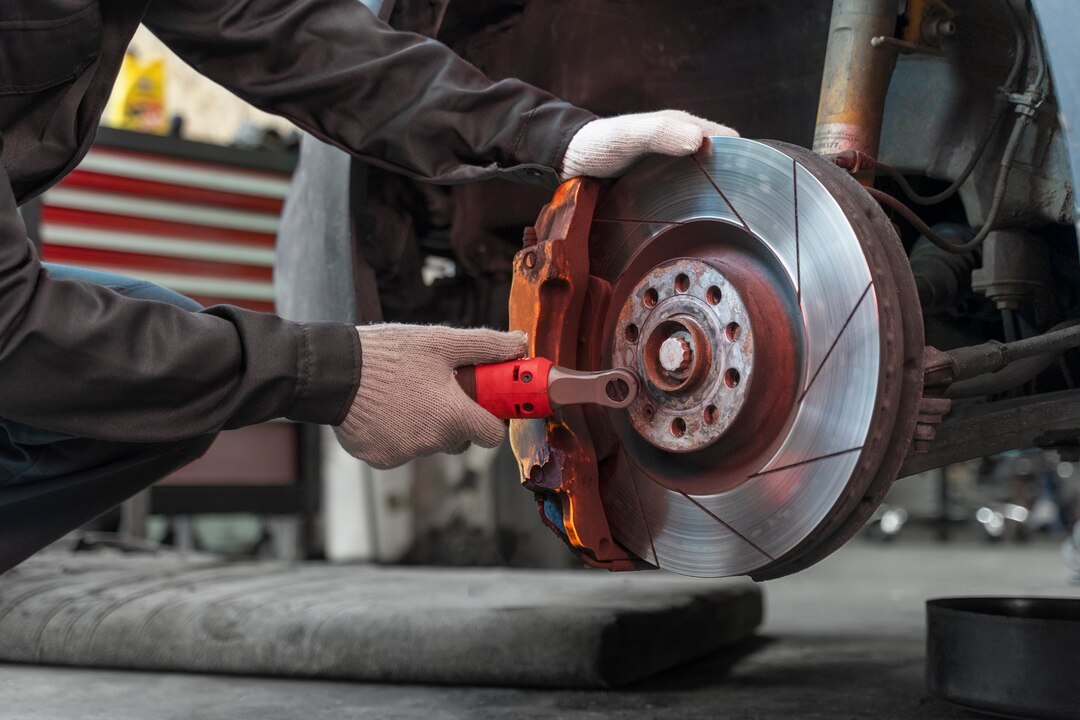Your car’s brake rotors play a crucial role in the braking system, providing the surface against which the brake pads press to slow down or stop the vehicle. Over time, brake rotors can wear down due to friction, heat, and other factors, leading to diminished braking performance and potential safety hazards. Recognizing the signs of worn brake rotors can help you address issues promptly and ensure your safety on the road. Here are 10 signs that your car’s brake rotors may need replacement:
- Vibration or pulsation: One of the most common signs of worn brake rotors is vibration or pulsation felt through the brake pedal or steering wheel when you apply the brakes. This sensation is often caused by uneven wear or warping of the brake rotors, resulting in an uneven braking surface and compromised braking performance.
- Scoring or grooves: Inspect your car’s brake rotors for signs of scoring, grooves, or other visible damage. These can occur due to prolonged use, exposure to harsh driving conditions, or improper braking techniques. If you notice significant damage or wear on the surface of the brake rotors, it may be time for replacement.
- Squealing or squeaking noise: Worn brake rotors can produce squealing or squeaking noises when you apply the brakes. This noise is caused by the brake pads rubbing against uneven or damaged brake rotor surfaces, indicating that the rotors may need to be replaced.
- Brake pedal feels spongy: If your car’s brake pedal feels spongy or soft when you press it, it could be a sign of worn brake rotors. Sponginess in the brake pedal can occur when the brake rotors are worn down or warped, resulting in reduced braking performance and responsiveness.
- Longer stopping distances: If you notice that your car’s stopping distances have increased, it could be a sign of worn brake rotors. Worn brake rotors may not provide the necessary friction and stopping power to slow down or stop the vehicle efficiently, resulting in longer stopping distances and increased risk of accidents.
- Brake pedal pulsates when stopping: In addition to feeling pulsation through the brake pedal, you may also notice pulsation or shaking in the vehicle when you apply the brakes. This sensation is often caused by uneven wear or warping of the brake rotors and indicates that they may need to be replaced.
- Brake fluid leaks: Inspect your car’s brake system for signs of brake fluid leaks, which can indicate issues with the brake rotors, calipers, or other components. Brake fluid leaks can lead to loss of brake pressure and compromised braking performance, posing a safety hazard on the road.
- Visible cracks: Check the surface of your car’s brake rotors for visible cracks or fractures, which can occur due to prolonged use, overheating, or other factors. Cracks in the brake rotors can compromise their structural integrity and effectiveness, necessitating replacement.
- Uneven wear: Uneven wear patterns on the surface of the brake rotors can indicate issues with the brake pads, calipers, or other components. If you notice that the brake rotors are worn down unevenly or have significant wear on one side, it may be time for replacement.
- Dashboard warning light: Some modern vehicles are equipped with dashboard warning lights that indicate issues with the brake system, including worn brake rotors. If you see a brake warning light illuminated on your dashboard, it’s essential to have your brake system inspected by a qualified mechanic to determine the cause of the issue.
If you experience any of these signs or symptoms of worn brake rotors, it’s essential to have your car’s braking system inspected by a qualified mechanic. Neglecting worn brake rotors can lead to further damage to the brake system, compromised safety, and increased risk of accidents. By addressing worn brake rotors promptly and replacing them as needed, you can ensure your safety on the road and maintain optimal braking performance for your vehicle.











